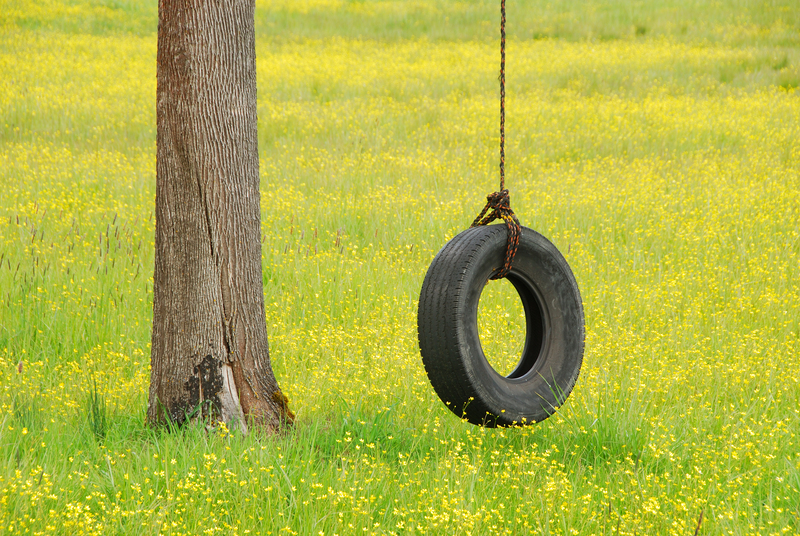Taking Away Garden Seats
Posted on 28/04/2025
Garden seats are a staple in most gardens, offering a place to rest, relax, and take in the bustling beauty of nature. However, there may be valid reasons to consider removing or reducing the number of garden seats in your outdoor area. Whether it's for practical, aesthetic, or safety reasons, taking away garden seats can make a significant impact on your garden's overall functionality and appearance.
Enhancing Garden Aesthetic
One of the primary reasons to remove garden seats is to improve the aesthetics of your garden. While seating arrangements can add charm, they can also clutter the space if not appropriately placed. By eliminating garden seats, you can create a more open and seamless look. This can also provide more space for planting beds, pathways, and decorative elements, which can elevate the visual appeal of your outdoor area.
Moreover, a minimalist approach can make your garden look more sophisticated and elegant. It can highlight the natural features and landscaping without distracting elements. Removing seating can also draw attention to focal points such as statues, water features, or specific plant species.

Improving Safety and Accessibility
Safety is another critical factor to consider. Garden seats can sometimes become obstacles, especially if they are placed too close to walkways or in tight corners. This can pose a risk of tripping or bumping into them, particularly in gardens frequented by children or elderly individuals.
In terms of accessibility, taking away garden seats can open up pathways, making it easier for people to move around, including those with mobility issues. A more accessible garden ensures that everyone can enjoy the space without any hindrance.
Boosting Outdoor Activity Space
If you have a small garden, maximizing the use of available space is crucial. Removing garden seats can free up room for more active uses. This can include creating space for exercise, setting up temporary structures for events, or even adding a small vegetable patch.
Outdoor activities aren't just limited to gardening; children can have more space to play, or you can conduct yoga or meditation sessions without having to move seating arrangements. Having a multi-purpose area can make your garden a more dynamic and functional space.
Encouraging Standing Interactions
In social environments, standing interactions can encourage more dynamic conversations and movement. Without garden seats, people are more likely to stand and move around, promoting better social interaction and engagement. This can also lead to healthier habits, as standing burns more calories than sitting and can also improve posture.
Environmental Benefits
From an environmental perspective, removing garden seats can contribute to sustainability. Many garden seats are made from materials that are not eco-friendly or durable. By removing or replacing them with more sustainable options, you can reduce your carbon footprint and contribute positively to the environment.
Pros & Cons of Taking Away Garden Seats
Pros:
- Improved garden aesthetics
- Enhanced safety and accessibility
- More space for outdoor activities
- Encourages standing interactions
- Environmental benefits
Cons:
- Reduced seating comfort
- Less resting space for elderly or disabled individuals
- Potential decrease in social gathering spots
- May require alternative seating solutions
Tips for Transitioning
1. Start Small: Begin by removing a few seats to see how it impacts the space.
2. Reallocate Seating: Consider moving seats to a deck or patio area to keep some seating options.
3. Add Versatile Furniture: Use foldable or portable seating that can be brought out as needed.
4. Landscape Design: Redesign garden areas to include natural seating options like boulders or tree stumps.
5. Consult with a Designer: A landscape designer can provide insights on how to balance seating needs with space utilization.

Key Takeaways
- Removing garden seats can drastically improve the aesthetics, safety, and functionality of your garden.
- It allows for more dynamic and active use of space.
- Always consider the needs of all garden users, including elderly and disabled individuals.
- Transition gradually to adapt and find alternatives for seating.
Conclusion
Taking away garden seats might seem like a bold move, but it can offer numerous benefits from improved aesthetics to enhanced safety and more dynamic social interactions. While there are cons to consider, strategic planning and design can mitigate these issues. By exploring alternative solutions and transitioning thoughtfully, you can create a beautiful, functional, and accessible garden that's enjoyable for everyone.



